|
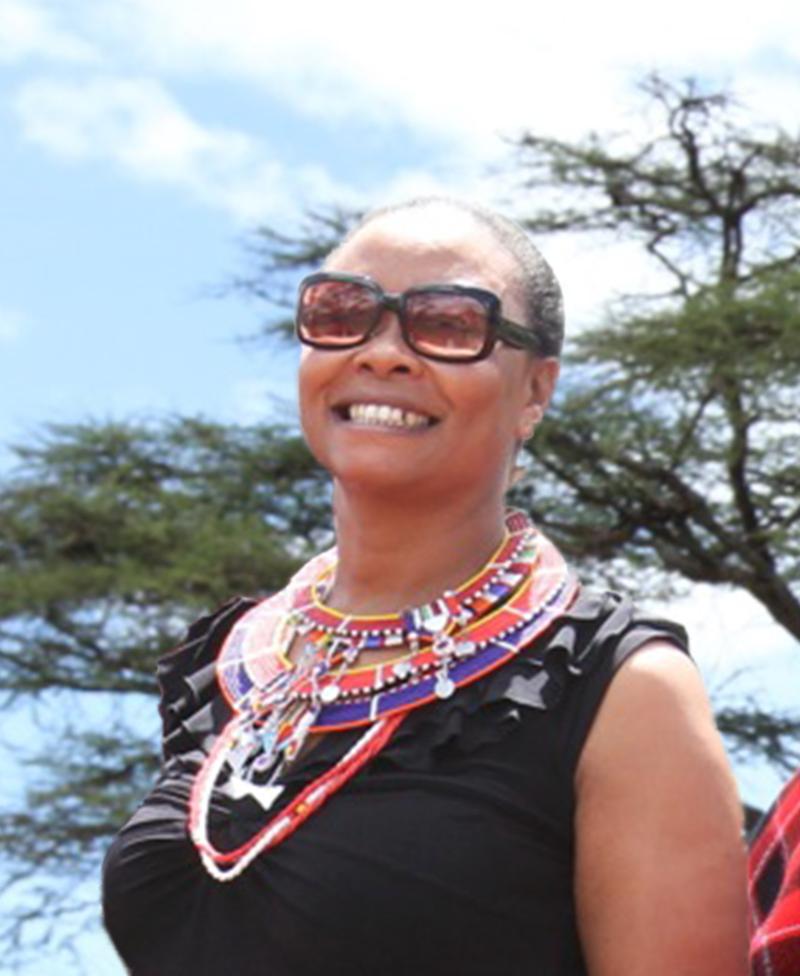 Catherine Namanyak Sayialel asks... Catherine Namanyak Sayialel asks...
Care to Donate Now?
('Katito' is ATE's Research Assistant)
|
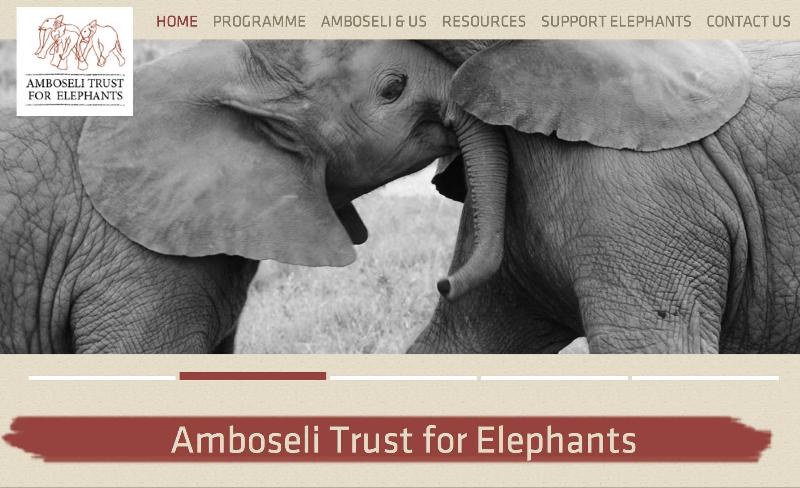 New ATE Website | | |
Our new website will be online in the next week. We think it looks gorgeous. It is also full of important information about elephants and the work of the Amboseli Trust for Elephants. We hope you like it.
|
|
Breakfast and Elephants with Kenya's New Cabinet Secretary for the Environment
|
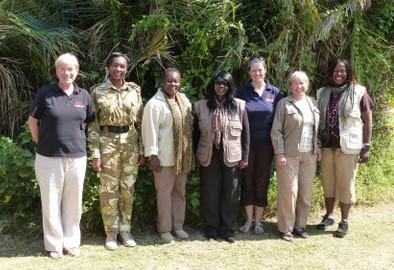 | |
Phyllis Lee, Abby Lelei from KWS, Winnie Kiiru, Professor Judy Wakhungu, Vicki Fishlock, Cynthia Moss and Pat Awori in the ATE research camp
|
| |
On the day of the signing of the Kitenden Corridor lease agreement we at ATE were very honored to host Professor Judy Wakhungu, Kenya's new Cabinet Secretary for Water, Environment and Natural Resources. She arrived at the airstrip with KWS board members Pat Awori and Winnie Kiiru, who after an honor guard and various other formalities, arranged for the Secretary to go out with us to see some elephants up close and personal. The lovely EA family performed on cue and we were able to spend some quality time in amongst relaxed and secure elephants.
 | |
Elfrida and calves show the Cabinet Secretary how relaxed Amboseli elephants can be (photo: Pat Awori)
|
We then went on to the research camp for breakfast and discussions. We just had time afterward for another drive out to see elephants. We were very impressed with the new Secretary and have high hopes of seeing some important conservation initiatives. |
| March for Elephants in the US | |
One of Kenya's conservation heroes, Jim Nyamu, will be travelling to the US to lead a march from Boston to Washington, DC to create awareness about the plight of Africa's elephants. The march will start on September 3 and finish on October 4 and Jim will be speaking at several venues along the way.
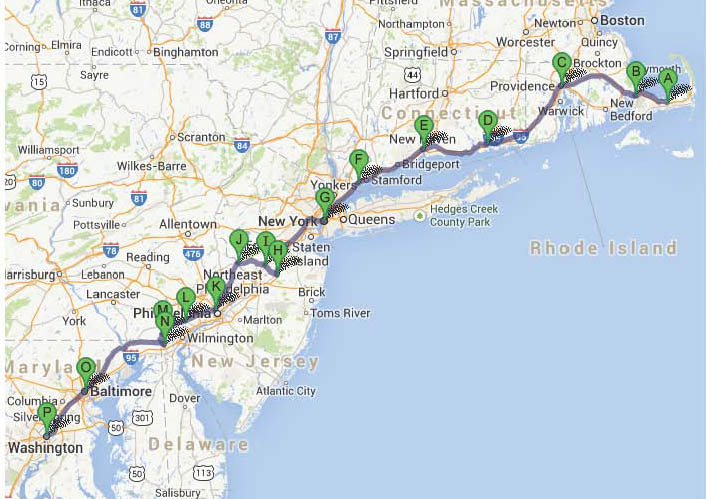 Jim, who heads up an NGO called Elephant Neighbors, has already walked hundreds of miles for elephants in Kenya. He has a commitment and passion that are remarkable.
We would like to ask you to support Jim on his "Ivory Belongs to Elephants March". First you can join him on part of the march. He is also looking for people to host him along his way. Financial support would also be welcome. Walking long distances can be very lonely especially in a foreign land so if you can help him feel welcome and at home that would be appreciated.
Our Executive Director, Betsy Swart, will join KWS board members Pat Awori and Winnie Kiiru to walk with Jim into Princeton where he will give an address at Princeton University.
To find out more about the march and venues Click Here.
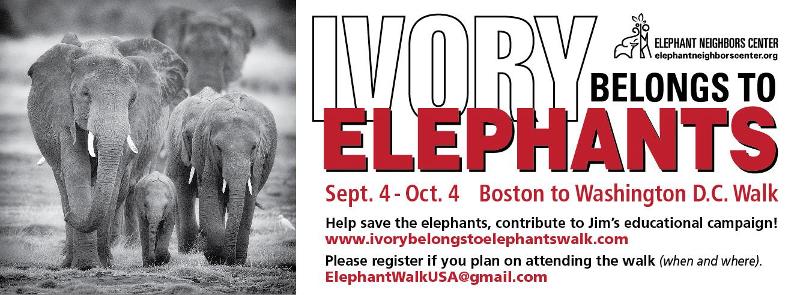
|
|
Chinese Ivory Smuggler Jailed
| |
Finally someone has been jailed for trafficking in ivory. On August 22 a Chinese national was sentenced to 31 months in jail after being convicted of attempting to smuggle ivory out of Kenya.
Chen Biemei, 30, was arrested on August 14, 2013 while trying to smuggle assorted worked ivory objects sealed in 15 packets weighing 6.9kg. The packets were declared as macadamia nuts . She was trying to board a Kenya Airways Flight to Hong Kong at the Jomo Kenyatta International Airport in Nairobi.
 | |
Inside these well-known nut packets were pieces of ivory--the packets were sealed (photo: KWS)
|
When she first appeared in court in Nairobi on August 16, 2013, Biemei denied the charges and was remanded at Lang'ata Women's Prison. However, during the trial, Biemei pleaded guilty to all charges and was sentenced to serve eight months for being in possession of ivory, 15 months for dealing in ivory and eight months for failing to make a report to wildlife authorities of being in possession of the ivory. There was no option of a fine.
During sentencing, the magistrate noted that Kenya is facing rampant poaching and that the culprit had 'malicious intentions and a guilty mind' that necessitates a custodial sentence to reign in the menace.
A total of 17 suspects of six different nationalities have been arrested smuggling ivory out of the country since the beginning of this year.
|
|
Meeting with Born Free CEO
| 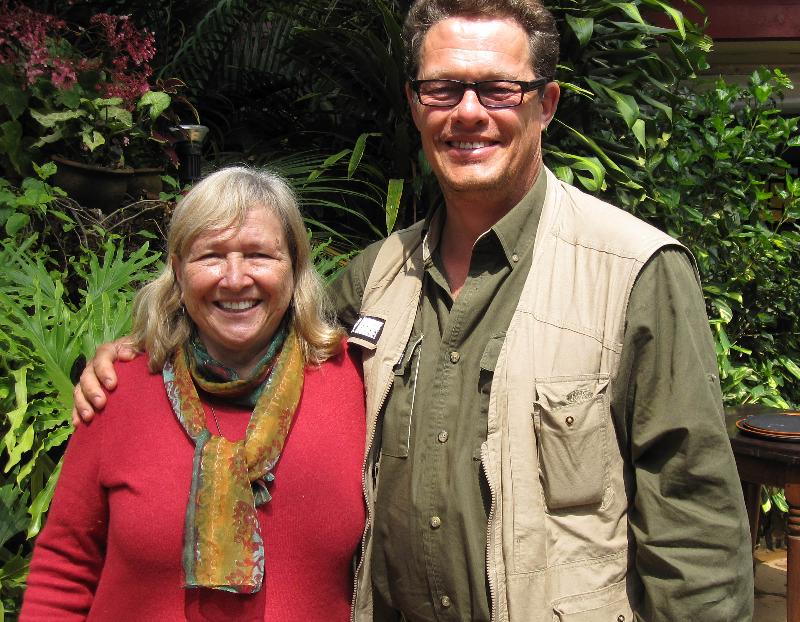 | |
In August Cynthia was pleased to meet with Will Travers the CEO of the Born Free Foundation. Born Free is one of the oldest and most consistent donors to ATE and we greatly appreciate the money they raise for us.
Back in 2000 they held an auction to name Echo's new calf who was born in August of that year. The winning name was Emily Kate. Five years later they held a contest to name Echo's next calf and she became Esprit. Born Free has adopted both of these elephants and we send them regular reports on their activities.
Earlier this year Emily Kate gave birth to her first calf, a male. Once again Born Free held a contest and the winning name was Ewok.
|
|
The Case Against ATE Staff
| |
With yet another postponement -- this time until 17 September -- of the hearing in the case against two of our staff, Soila Sayialel and Robert Ntawuasa for possession and trafficking in ivory, we grow more convinced that the evidence was fabricated and there is in fact no case to answer.
The waiting is painful for all of us. But hopefully in the September-October Newsletter, we shall be able to report a just and satisfactory outcome.
|
|
Dont' Buy Ivory Bracelets
| |
We've just received a new order of bracelets. Think about ways to use these to spread the word and advocate for a ban on domestic sales of ivory products. If your group wants to help elephants, please contact Betsy Swart at:
eswart@elephanttrust.org.
|
|
IGive
One of the ways you can support ATE is by making your online purchases through IGive. If you sign up the Amboseli Trust for Elephants as your recipient organization we will get a small percentage of the sale. Connect with iGive.com. | |
|
Archive of Past Newsletters
| |
Previous issues of the ATE newsletter can be found on our website: Archive
|
|
Give a Gift that Lasts Forever
| |
Include ATE in your bequest and estate planning. For a brochure on how to do that, contact Betsy Swart in our US office: eswart@elephanttrust.org.
|
|
|
News from the Amboseli Trust for Elephants
July-August 2013
|
Greetings!
It's our winter here in Kenya, which means it's cold and overcast. (cold for us is between 6-15C or 43-59F--not very cold but the problem is our houses and tents aren't heated so the temperatures are the same inside as outside). This kind of weather dampens our spirits along with the daily news of more elephants and rhinos being poached and more huge shipments of ivory being intercepted. However, all I have to do is spend a morning out with the Amboseli elephants and my determination to keep them safe is renewed. Also being with relaxed elephants improves my mood tremendously. Amboseli's elephants are still relatively safe and they are still leading full lives with intact families led by experienced matriarchs. The females are able to mate with preferred older musth males. Both families and independent bulls are roaming freely over a large ecosystem. They are lucky elephants. In turn we are lucky to know the Amboseli elephants. They have taught us so much about elephant behavior and ecology. That knowledge has influenced the way people regard elephants both in the wild and in captivity. When people ask me what is the most important result of ATE's long-term study I can say without hesitation that it is the wider awareness of elephants as complex, emotional, sentient beings who deserve to be treated with respect and kindness. They also deserve to share the Earth with us. No matter how dispirited we become we will never give up fighting for a secure, compassionate future for elephants.
Cynthia Moss
Director
Amboseli Trust for Elephants
|
|
 |
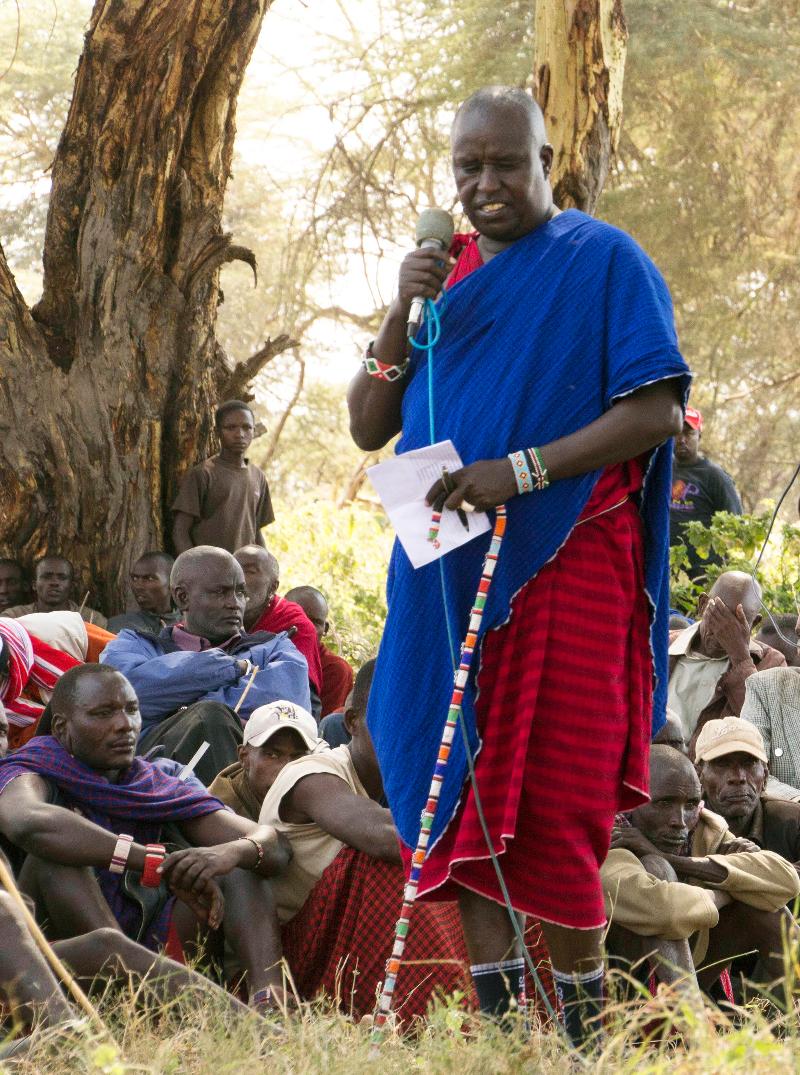 | | Conservation hero Daniel Leturesh, Chairman of Olgulului-Ololarashi Group Ranch |
Kitenden Corridor Secured
On Wednesday, July 17th, an historic signing ceremony was held under yellow-barked acacia trees along the Enkongu Narok swamp in Amboseli. The ceremony was the culmination of a great deal of work on the part of the local Maasai community and concerned NGOs working in the ecosystem.
Amboseli is a tiny park by African standards, only 150 sq. miles (392 sq. kms) but the area over which the wildlife roams is more than 3000 sq. miles (8000 sq. kms). The Maasai of Amboseli have always been very tolerant of wildlife and they are largely responsible for the presence of the abundant wild animals in the ecosystem today. However, if there is to be any future for wildlife the areas outside of the Park have to remain open.
There are regular corridors the animals use when they are going back and forth. One of the most important ones is known as the Kitenden Corridor. It stretches from Amboseli National Park crossing the Tanzanian border to the lower slopes and forests of Kilimanjaro.
The Tanzanian government declared their part of the Kitenden corridor a protected area many years ago. To complete the corridor it was necessary for the Kenya side to be secured. The Kenya portion included private land and that land had been subdivided into plots. If those plots were fenced and farmed that would be the end of the corridor.
Through foresight and hard work the local Maasai leaders convinced the owners to lease their land for conservation. In particular, the Chairman of the Olgulului-Ololarashi Group Ranch, Daniel Leturesh, made it happen and in our opinion he is a conservation hero. Nearly 1,600 Maasai landowners signed a share certificate agreeing to the lease of the land. The leases and the payments are a program of the International Fund for Animal Welfare (IFAW).
The African Wildlife Foundation has also been instrumental in negotiating for this corridor and others in the Amboseli ecosystem.
The importance of this achievement also drew senior officials of the Government of Kenya and conservation organisations, including Professor Judi Wakhungu the Cabinet Secretary Water, Environment and Natural Resources under whose docket wildlife management in Kenya falls, Daniel Leturesh, Chairman of the OOGR, Azzedine Downes, President of IFAW, William Kiprono, Director of KWS, Joseph Ole Lenku, Cabinet Secretary Interior and Coordination of National Government, and other dignitaries. Cynthia Moss and Vicki Fishlock represented ATE.
|
 |
|
Hands Off Our Elephants: Hope in the Voice of the People -- Harvey Croze
"Let every single Kenyan and all friends of Kenya take up their responsibility to stop this crisis in securing a Kenya where the magnificent, magical elephant does not only exist on the back of a 1,000 Shilling note, but is free to roam unafraid and to continue to enchant our children, grandchildren and humans around the world as they have done for thousands of years."
Her Excellency, Margaret Kenyatta, First Lady of the Republic of Kenya at the Launch of HANDS OFF OUR ELEPHANTS.
The almost daily stories about more elephants and rhinos being killed in our neighbouring ecosystems, about another massive seizure of contraband ivory along the bloody illegal trade route, about persistent endemic corruption in bodies that should be fighting to preserve national and global wildlife heritage... it's enough to drive us on the front lines to despair. We are angry and frustrated and, worse, feeling helpless. Is there nothing that can be done? Kenyans believe there is.
But first consider where we can and where we cannot have an impact by looking at the ivory trade way-stations from the field in Africa to the ivory shop in China.
In Africa, for example, how can we begin to relieve the pernicious poverty that drives the poor subsistence farmer or herder to poach in order to feed his family?
At the other extreme in the Far East, how are we do convince the newly-moneyed middle-class Chinese professional that he or she does not really need a stunningly-worked ivory carving for the mantelpiece to display personal stature and regard for ancient culture?
The only solution that just might work in time lies with the people of Africa, whose patrimony is being stolen under their very noses. They must just say NO.
And that is just what Kenya's Hands Off Our Elephants movement is trying to achieve. Spearheaded by outspoken conservationist Dr. Paula Kahumbu, HOOE is catalysing the changing of Kenyan minds through a stylish and carefully orchestrated flood of information through the press and social media. The voices of schoolchildren and local NGOs such as the Kenya Elephant Forum and Kenyans United Against Poaching, KUAPO, and the impressive efforts of the long-distance walker-for-elephants, Jim Nyamu (see sidebar) have captured the high-level attention and engagement of the First Lady, Margaret Kenyatta, who has thrown her influence behind the movement.
And even in the mainstream political corridors there is new hope with the personal commitment of Kenya's new Secretary of the Environment, Water and Energy, Prof. Judi Wakhungu, and the Secretary for the Interior, Joseph Ole Lenku.
Such high-level support is absolutely necessary, for example, to encourage updating wildlife legislation so that the current ridiculously small fines for trafficking are replaced with punishments befitting serious economic crime.
ATE is fully behind this groundswell of popular opinion and engaged new politicians, and is providing strong scientific backstopping concerning elephants and ecosystems.
Keep listening for the sound of an angry populace, and help them to block the terrible trade here at source where it matters so much for the future of Kenya and Kenyans.
|
|
Contact us at: info@elephanttrust.org
|
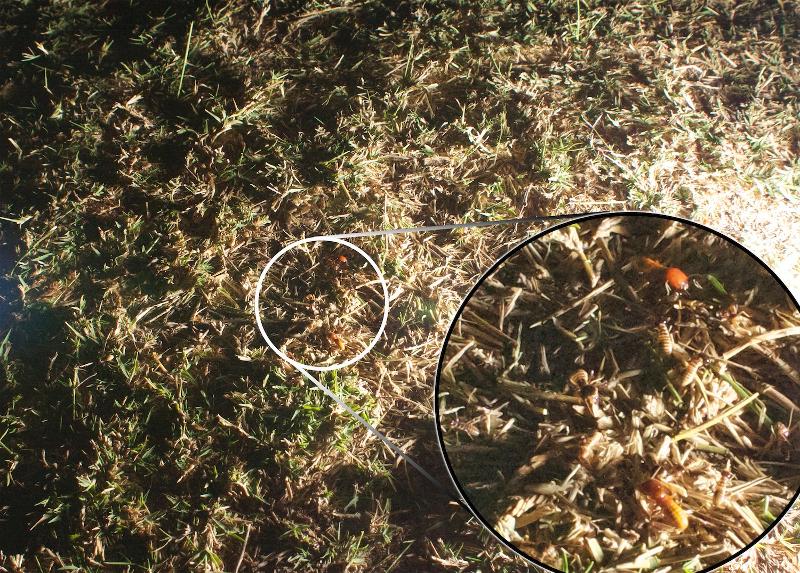 | Leaf-cutting termites: the loupe shows 6 or so of the hundreds in the frame.
Have a look at the YouTube clip for evidence of more. |
A hoard of leaf-cutting termites was spotted frantically at work in the middle of the night in early August on the short grass pathways in the Amboseli Trust for Elephants research camp. So what? you might ask: termites are well-known to be common and perhaps the most important consumers of above-ground plant biomass in sub-Saharan Africa. But this was the first time we had seen them in four decades! Conventional wisdom holds that termites are repelled by Amboseli's alkaline soils. But there they were, cutting off lengths of grass stem and leaves and carrying them down holes that appeared in the ground. Another portend of ecosystems in flux, perhaps under the influence of global and regional climate change?
|
The History of the WA Family
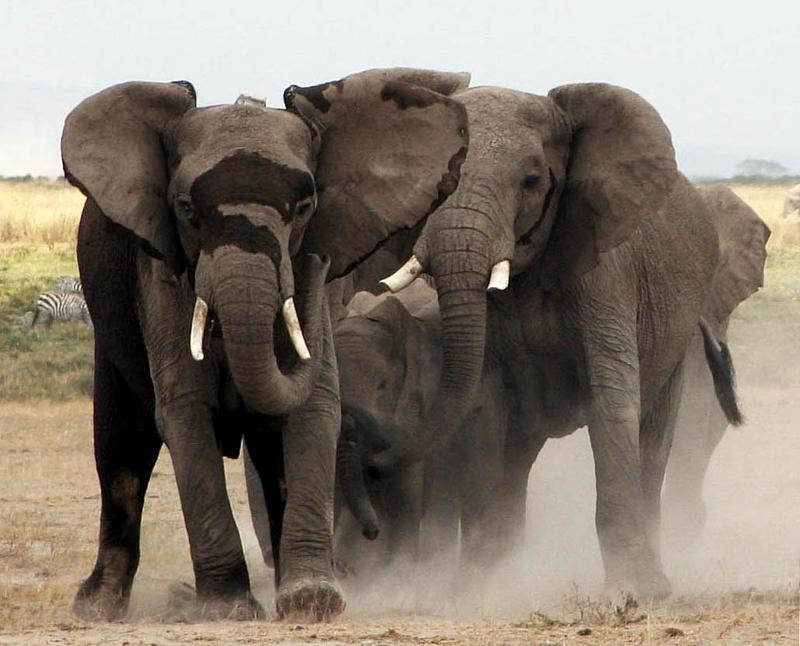 | |
Willow and Winnie reunite after Willow was darted
|
From the early days of our research the WA family has had a very close relationship with the MA family. In fact, from time to time we have been on the point of amalgamating them into one family and then being elephants they split up and went their separate ways for awhile and we were back to deciding they were two families. At the moment they are two families.
The WA family was first sighted on March 26, 1975. They made up a group of six individuals: two adult females, one young female, and three calves--a six-month old, a four year old and a five-six year old. This small group was separate but close to the MA family.
They were on the west side of the Enkongu Narok swamp near Observation Hill so I thought they might be western elephants. In Amboseli the population can more or less be divided into eastern and western elephants with the Enkongu Narok swamp course dividing the two. The subpopulations usually stick to their part of the ecosystem in the dry season but in the wet season elephant families can be found anywhere and the families from both sides of the swamp freely mix together.
It was the beginning of the wet season when I first recorded the WAs. The next time I saw them it was September 1975 and well into the dry season. Now they were in a totally different part of the Park. They were sighted for five more times that year and always on the eastern side, so that first sighting was confusing. They seemed to be northeastern elephants.
Since I had such good sightings of this family from the beginning I felt confident of the composition and named them early on. The family looked like this:
Wendy Adult F
Calf F born around Sept 1974
Calf M about 5 years old
Willa Adult F
Calf F 5-7 years old (maybe Willa's)
The 10-year-old female I had seen with them the first day turned out to belong to the MAs. She was eventually called Marcia.
To read the full history of the WAs Click Here.
|
|
Amboseli Book Chapter Summary, 11: Elephant Cognition
In Chapter 11, Elephant Cognition: What We Know About What Elephants Know, Richard Byrnes and Lucy Bates probe deeply into the conventional wisdom that elephants have an excellent memory and great intelligence. The authors review what is currently known about elephants' intellectual skills, using evidence from the Amboseli study and other field projects.
 | |
Having a scratch: spontaneous tool use
|
Evidence shows that living in an extensive social group promotes greater intelligence. Elephant society is one of the most extensive of any vertebrate, and elephants have the largest absolute brain size of any land animal.
The review shows that elephants:
- May be particularly specialised for long-distance navigation: faced by the need to remember spatial information, for instance the locations of waterholes in a desert, elephants seem able to re-find places not visited for many years, over vast distances;
- Spontaneously engage in simple forms of tool use;
- Perform well in laboratory tests of learning, discrimination and memory;
- Categorise humans into groups according to the varying levels of threat posed;
- Recognise individuals and keep track of the locations of family members;
- Display empathy for the problems faced by others and react to their expressed emotions (although so far only there are only hints as to elephants' abilities in cooperation, imitation and teaching);
- Have the ability to recognise themselves in a mirror, and so perhaps have a concept of self.
Byrnes and Bates argue that the data show that elephant working memory is larger than in humans or primates: elephants' vaunted reputation for memory has a basis in fact.
|
|
|
As we have seen in this issue of the newsletter, there are many people and organizations working hard for elephants and I do believe we will eventually make a difference. Will it be too late for most of Africa's elephants?
We are in a race against poverty, corruption, greed, and the uncaring desire for status symbols. What we want and need is a complete ban on all trade in ivory both internationally and domestically. You can help make this happen. Write to your government officials, protest, march, do everything you can to stop the trade in blood ivory. We can't lose elephants.
Cynthia Moss
Amboseli Trust for Elephants |
|
|